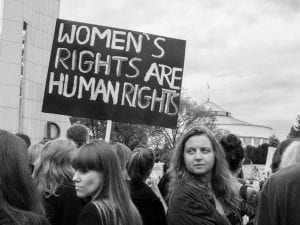Feminism, defined in the Oxford Dictionary as “the advocacy of women’s rights on the ground of the equality of sexes.”. Many would think (me being one) that by the 21st century, women would have the same rights as men, the same access as men. However, for many countries this still is not the case.
There are four waves to feminism, that will help us to get started.
- Began in the late 19th century with the Women’s Suffrage Movement, important figures include Emiline Pankhurst
- They were first focussed with gaining women’s voting rights across the world – women previously were unable to vote
- By the early 20th century, the U.K eventually granted women’s voting rights to those over 30
With the outbreak of World War 2, and with men being shipped off to defend their country several years after the first war, women were left at home and expected to work. Many women took on jobs that were traditionally mens e.g. labourers, such jobs that were not previously accessible to them.
2nd Wave:
- Began in the late 1960’s following the equal pay act
- During this time, the sexual revolution was occurring, and for many started with feminists. This helped create the contraceptive pill which allowed women to control their own lives more than they were previously able to.
3rd and 4th Wave:
- These waves both began in the 21st century.
- 3rd wave mainly focused on gaining women’s rights for non-white, lower income women
- 3rd wave allowed a greater access to education for these women, bringing them on the same level (in terms of rights) as white, higher income women
- 4th wave for many began with the MeToo movement, which advocated for women that have been sexually assaulted by men of power in particular
- Over 3 million people participated in MeToo marches across the world to spread awareness for the issue.

